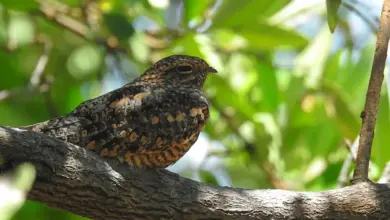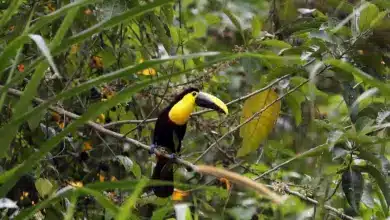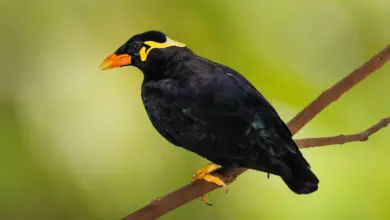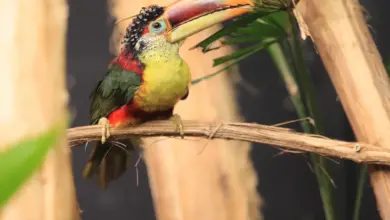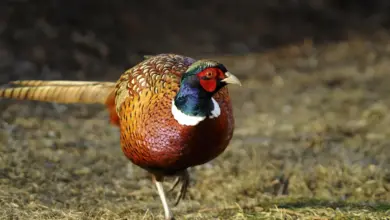The Lettered Aracaris (Pteroglossus inscriptus) – also known as Lesser Aracari, Lettered Toucan or Maroon-banded Aracari – is found in South America, mostly south of the Amazon river.
It lives in the subtropical or tropical moist lowland forests and swamps of Bolivia, Brazil, Colombia, Ecuador and Peru.
Aracaris generally roost socially throughout the year. Up to five adults and their fledged offspring sleep in the same hole with their long tails folded over their backs.
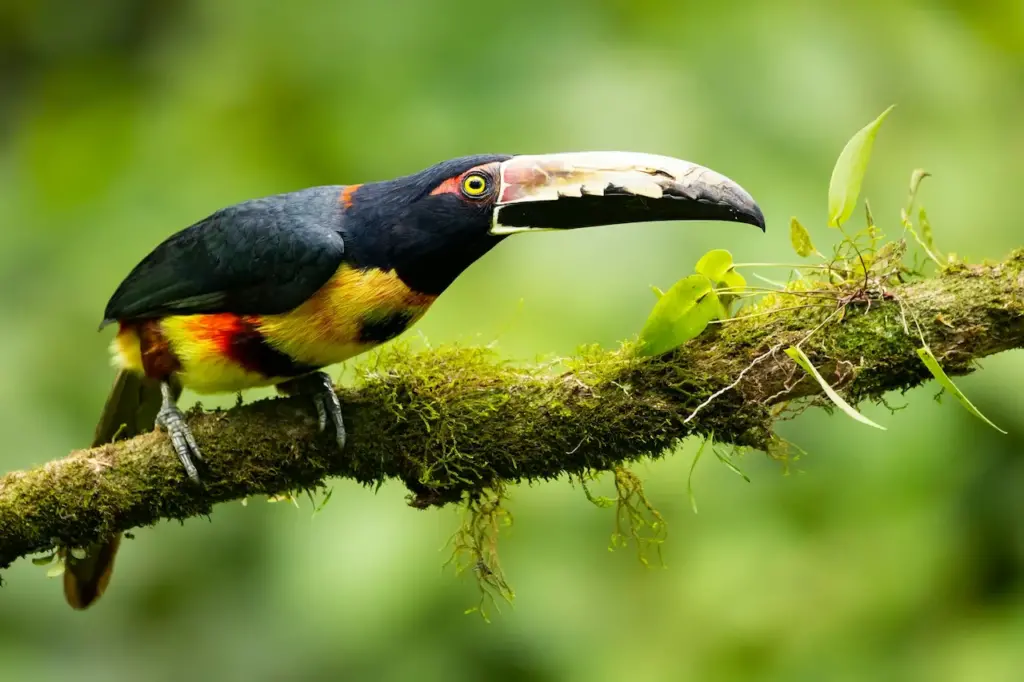
Description:
The Lettered Aracari is one of the smaller toucans, with an average length of 11.5 inches (29 cm) and weighing about 4.6 oz (130 g).
Their most distinctive feature is the oversized yellow bill, with a row of short black lines (“letters”) on the upper bill leading away from the edge.
It has a compact body that is entirely yellow below – without the bands or spots that can be seen on the other aracaris species. Its tail is rounded and its neck is short and thick. The area around the eyes is blue.
As is the case with toucans in general, their wings are relatively small and their legs are strong and short.
The gender can easily be identified by the color of the face; the male has a black face, while the female has a chestnut-colored face.
Breeding
They nest in trees with appropriate hollows, most of which are previously made by woodpeckers. Other hollows are the result of a branch break and ensuing rotting of the heart wood from rain over a period of time.
Both the male and female share the incubation and chick rearing duties. The eggs are incubated for about 16 days.
The newly hatched chicks are blind and naked with short bills and thick pads on their heels to protect them from the rough floor of the nest. Both parents, as well as their previous offspring and/or possibly other adults, feed the chicks. The young fledge after about 6 weeks. The adults continue to feed them for several weeks after fledging.
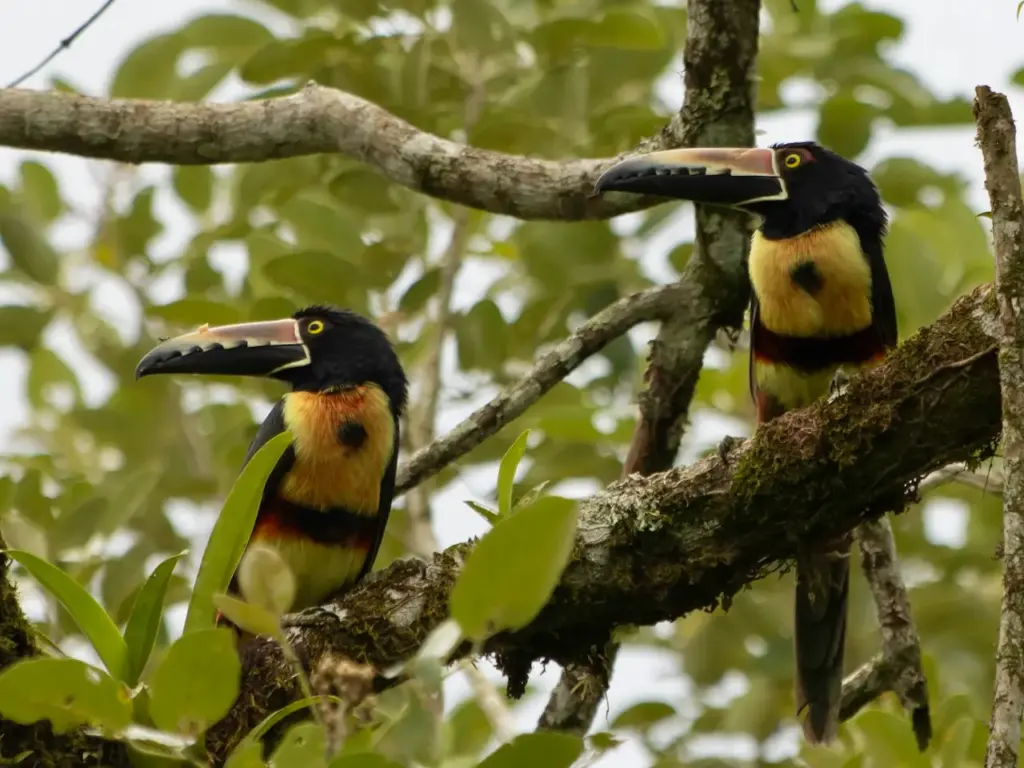
Aviculture
These active Aracaris require large, planted flights. Aracaris are generally docile and can be kept with smaller birds — but not birds so small that they (or their young) could be considered as prey by these large birds, such as finches. Breeding pairs are best kept alone.
Captive birds may breed in nest boxes with a concave bottom; however, they generally prefer natural nests constructed from palm tree logs, which allows them to dig their nest chambers deeper.
Jerry Jennings, President / Director of Emerald Forest Bird Gardens provides the following input:
“Toucanets and Aracaris … all require the same space. The smallest breeding flight I have used was 4′ x 10′ x 6 feet high and the flights I currently use are 8′ x 12′ x 8 feet high and the newest flights are 8′ x 16′ x 8 feet high.
They need the proper diet, a nest log and the pairs must be compatible.
I would start with the easiest, so when you have babies you will feel a sense of accomplishment and want to continue. If you start with a difficult species you will have much less luck and may become discouraged.” (Source: Jerry Jennings, President / Director of Emerald Forest Bird Gardens)
